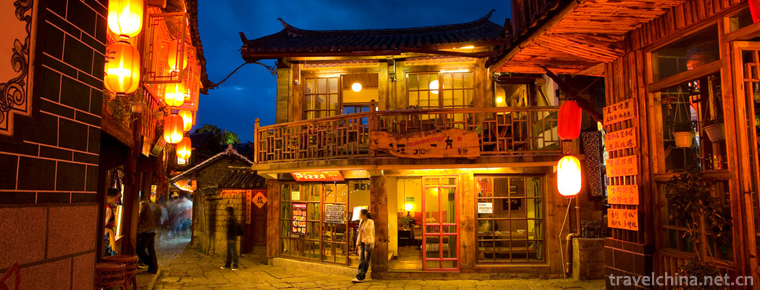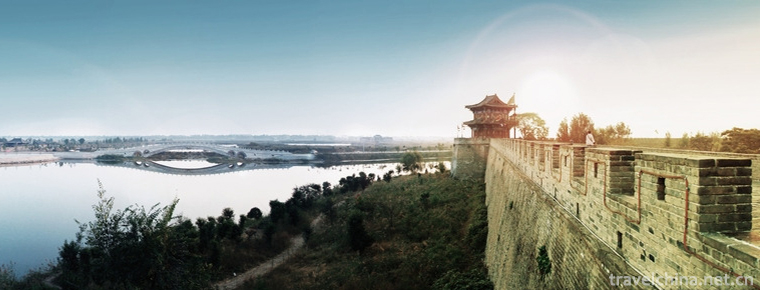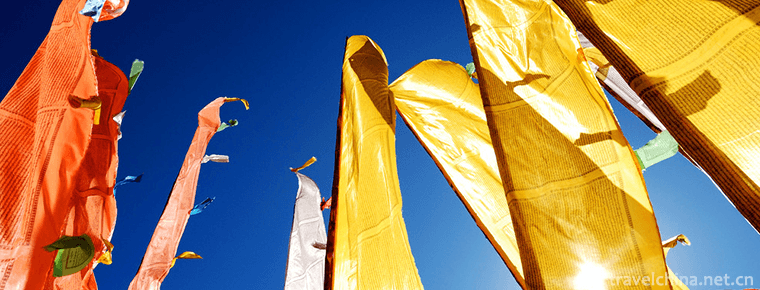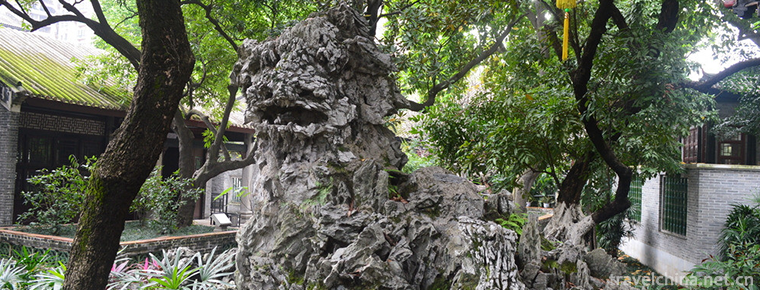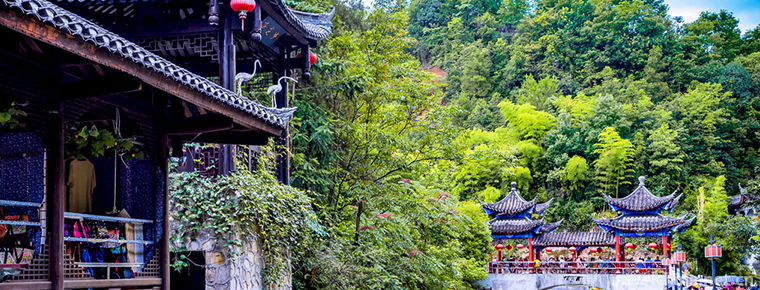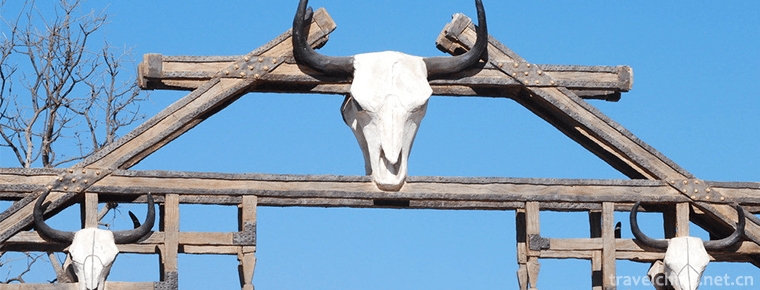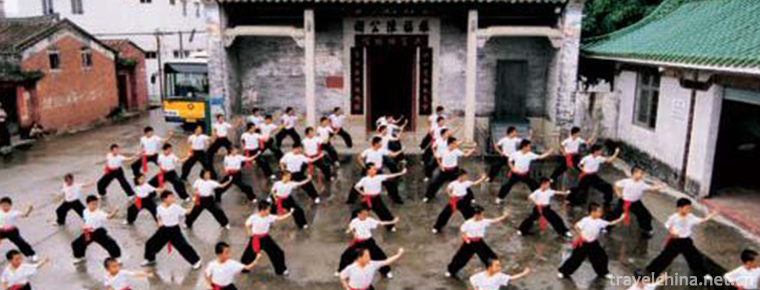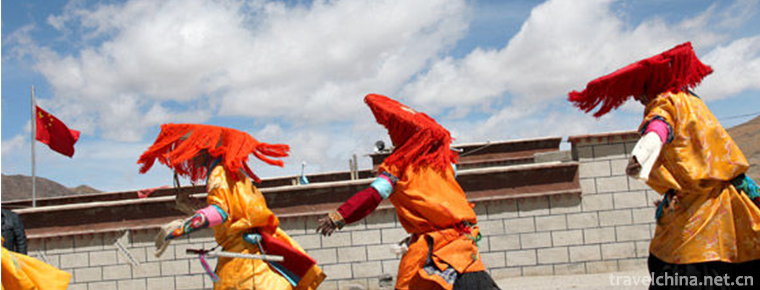Dayi Liushi Manorial Museum
Dayi Liu Manor Museum, located at No. 15 Jingui Street, Anren Town, Dayi County, Chengdu City, Sichuan Province, is one of the most important historical sites and representative buildings in modern China. The museum was founded in October 1958; the Dayi Landlord Hall and Exhibition Hall were officially built in 1958; and in early 1997, the Dayi Landlord Hall was officially renamed as the Dayi Liu Manor Museum.
The Museum of Dayi Liu Manor Museum covers an area of more than 70,000 square meters and has a building area of about 2,1055 square meters, which is in the style of Bazi in Western Sichuan. Museum buildings, collections, clay sculptures and relics are important objects for understanding and studying the politics, economy and culture of China's semi-colonial and semi-feudal society, as well as the history of warlords, folklore and modern residential buildings in Sichuan Province. They are also a cross-section of China's modern and contemporary social development history.
In 2001, it was awarded National AAAA Tourist Scenic Spot by the State Tourism Administration, and in 2009, it was awarded National Third-Level Museum by the State Administration of Cultural Relics. It is a national key cultural relics protection unit, an excellent patriotic education base of the national cultural relics system, and a national youth education base.
Historical evolution
Liu's manor complex was built in the late Qing Dynasty and completed in the late Republic of China.
In 1932, Liu Wencai built the south of the manor.
In 1942, Liu Wencai built the northern part of his (new mansion) manor for himself and his brother Liu Wenhui.
In 1932, Liu Wencai, who was the head of the Tax and Taxation Office of the Xufu (Yibin) and the Director of the Bureau of Tobacco and Alcohol Public Sales, returned home and built a manor in Daxing.
In 1958, Dayi Landlord Manor and Exhibition Hall were formally established. In October of the same year, Dayi Landlord Manor Exhibition Hall was formally established. After the Third Plenary Session of the Eleventh Central Committee, Dayi Landlord Manor Exhibition Hall was on the right track of Museum development.
In 1982, the exhibition hall began to collect and collate the documents in the museum and compile the Library Chronicle.
In 1984, the exhibition hall of the landlord manor was decentralized from Chengdu to Dayi County.
In May 1993, the landlord manor was named the third batch of Chengdu Patriotic Education Bases by the Chengdu Municipal Committee and the municipal government.
On August 30, 1995, it was named the Patriotic Education Base of Dayi County.
In November 1996, as one of the most important historic sites and representative buildings in modern China and Tongtong, it was announced by the State Council as one of the fourth batch of national key cultural relics protection units.
In early 1997, the exhibition hall of Dayi Landlord Manor was officially renamed as "Dayi Liu Manor Museum". In May of the same year, Liu Manor was awarded the title of "Excellent Patriotic Education Base of National Cultural Relics System" by the State Administration of Cultural Relics.
In 1999, the Dayi Liu Manor Museum was listed in the General Tourism Development Plan of Sichuan Province as one of the six priority scenic spots developed by the Sichuan Provincial People's Government.
In May 2000, the Dayi Liu Manor Museum was named the National Youth Education Base by the Central Committee of the Communist Youth League.
In November 2001, Dayi Liu's Manor was awarded National AAAA Tourist Scenic Spot by the National Tourism Administration.
In May 2009, Liu's Manor was declared as the third-class National Museum by the State Administration of Cultural Relics.
architectural composition
Dayi Liu Manor Museum is the architectural style of Bazi in Western Sichuan. The Museum covers an area of more than 70,000 square meters and has a building area of 21,555 square meters. It is two large buildings with a distance of 300 meters between the north and the south. The old manor is irregular polygon, surrounded by firebrick walls more than 6 meters high, seven gates, 27 patios, 180 houses and three gardens. The manor has heavy walls and alleys, thick doors and iron locks, secret rooms and multiple roads, and its layout is disorderly. The whole manor is like a dark maze building. There are rectangular, square, trapezoidal, diamond and other shapes; carved door threads and other decorations as many as hundreds. The interior of the manor is divided into hall, living room, reception room, accounting room, hiring institute, Rent-collecting institute, granary, secret treasury, water prison and Buddhist hall, platform, Xiaoyao Palace, garden, orchard and so on.
Exhibition and Exhibition
The basic exhibition of Liu's Manor Museum in Dayi consists of preface museum, hiring institute, Liu Wencai's living scene, large clay sculpture Rent Collection Courtyard and Manor Cultural Relics Treasure Museum.
The Liu Manor Museum in Dayi has formed five basic exhibitions:
1. Restoration display of Liu Wencai and his family's living scene in Manor Mansion, and exhibition of large clay sculpture "Rent Collection Courtyard" group sculptures.
2. Folklore exhibition in the West Sichuan Folklore Museum, which was held at the old site of the Manor New Mansion, reproduces the folklore and customs of the people in West Sichuan in terms of production and life.
3. Exhibition of the collection of the Manor Cultural Relics and Treasures Museum held in Liu Wencheng Mansion.
4. The exhibition of the restoration of Liu's ancestral residence was held in 2003 at the original site of Laowuji, the origin of Liu's family's prosperity.
5. The sculpture and modern painting and calligraphy exhibition of Western Sichuan vernacular dwellings were held at the old site of Liu Wenzhao Mansion.
Main attractions
Hubei Museum
When Liu Wencai was alive, the old mansion was invisible to ordinary people. On the left of the entrance to the manor is the "Employees'College", and on the right are the "Western-style living room" and the "Chinese-style living room". Moving forward is Liu Wencai's inner garden. Walking inward is Liu Wencai's inner courtyard, in which there is a Shoutang, which worships the soul of Liu's ancestors. On the right side of Shoutang is a room in which there is a magnificent dragon bed with four pillars, four doors and a bed covering an area of 9 square meters.
Rent Collection Courtyard
Rent Collection Courtyard is displayed in Liu Wencai Manor, Dayi County, Sichuan Province. It was created from June to October 1965. It is a large-scale clay sculpture group in modern China. The author is a folk artist from Sichuan Academy of Fine Arts.
"Rent Collection Courtyard" was conceived and created on the spot according to the landlord's rent collection situation in that year. It has seven groups of images: rent paying, rent checking, wind valley, fighting, accounting, rent forcing and rebellion. The plot shows the whole process of rent collection, which is the main means for landlords to exploit peasants. A total of 114 life-size characters are created.
Rent Collection Courtyard was reproduced and exhibited in Beijing from 1965 to 1966, which caused great repercussions. Later, it was exhibited in Albania and Vietnam, and in 1988, it toured Japan with copies of new fiberglass reinforced plastics copper-plated materials.
Miss Lou
Miss building, also known as "embroidery building", is located in the north of the Rent-collecting hospital, the east side of the main entrance of the old mansion. Miss building is the courtyard of the courtyard. The pillars on both sides of the courtyard door are cinnabar. On the rectangular white porcelain board inlaid above the lintel, there are four words "Xiangcheng Wufu". The top of the building is a relief-shaped white peony, which looks graceful and luxurious. For brick and wood structure, they are all framed with green brick, white line and column wall. Especially, the exquisite way spills over the Chinese and Western architectural style in the specific historical period of the 20's and 30's semi-feudal and semi-colonial on the six sides of the roof.
Value of cultural relics
Dayi Liu's Manor Museum witnessed the social and historical changes, showing the modern architectural skills and traditional rural folk culture in Western Sichuan. Museum buildings, collections, clay sculptures and relics are important objects for understanding and studying the politics, economy and culture of China's semi-colonial and semi-feudal society, as well as the history of warlords, folklore and modern residential buildings in Sichuan Province. They are also a cross-section of China's modern and contemporary social development history.
The whole manor is a combination of Chinese and Western architecture. It not only has the legacy of Chinese feudal mansions, but also embodies the closed social characteristics of feudal society, reflects the hierarchical relationship between feudal order and superiority, and absorbs the characteristics of Western castles and churches. These characteristics are particularly prominent in the new mansion buildings. The main style of manor architecture reflects the traditional Chinese aesthetic orientation, and in detail it incorporates the aesthetic characteristics of the West. This manor complex, which combines Chinese and Western architecture, is mainly made of brick and wood. It reflects the development of modern residential buildings in Western Sichuan in the 1920s and 1930s. It is not only a typical building form and style of landlord manor in modern Sichuan, but also a group of residential buildings with typical local characteristics formed by absorbing western architectural civilization and combining it with Chinese traditional architectural culture. It has high value in history, art, cultural relics and science and technology.
Collection
As of March 2015, the Dayi Liu Manor Museum has more than 27,000 cultural relics and collections; 1848 cultural relics above the third level, including 15 national first-level cultural relics, 21 second-level cultural relics and 1813 third-level cultural relics. It includes a set of marble tables and chairs inlaid with red sandalwood in Qing Dynasty. Eight of them are 108 cm high, 99 cm wide and 60 cm deep. They are inlaid with 27 jewels of various colors and are surrounded by flower and grass patterns decorated with snails and cylindrical rods.
The Museum has a large collection of cultural relics with rich connotations, such as the relics of the Tianwang Palace in the Taiping Heavenly Kingdom, such as Chinese-style red sandalwood spiral marble furniture, nine-layer carved ivory balls, thirteen-layer carved ivory towers, clay sculpture "Rent Collection Courtyard", Mr. Zhang Daqian's book couplets, Liu Wencai's gold dragon pillars back to a big flower bed, etc. Hundreds of military operations and administrative maps of Sichuan warlords during the period of "defense zone system", as well as hundreds of taxation, land tax collection (from 1930 to 1976) and military payment receipts during the period of "defense zone system", which reflected the cruel economic exploitation of peasants by the modern landlord class, such as land deeds and houses in 1949 by Qingdaoguang. There are thousands of deeds, account books, tenant register, land tax receipts, tax receipts, etc. There are various kinds of furniture with gold inlaid with jade, a large number of gold and silver jewelry and antique calligraphy and paintings.
Tourism information
traffic
Bus: 11, 13 and 15
Automobile: Chengdu-Wenjiang-Chongzhou-Dayi
The Expressway goes to Dayi County Town (52 km) and then to Anren Town by the second-class highway of 12 km. The manor is located in Anren Town.
Opening Hours
Opening Hours:
Summer (1 May-7 October)
Ticket selling time: 9:00-17:00 (closed at 17:30)
Winter (8 October-30 April)
Ticket selling time: 9:00-16:30 (closed at 17:15)

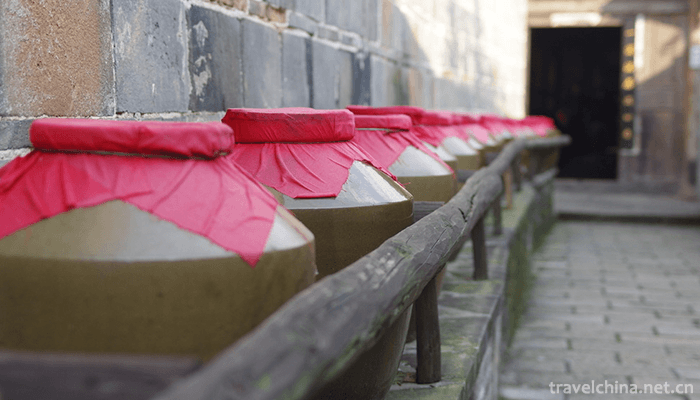
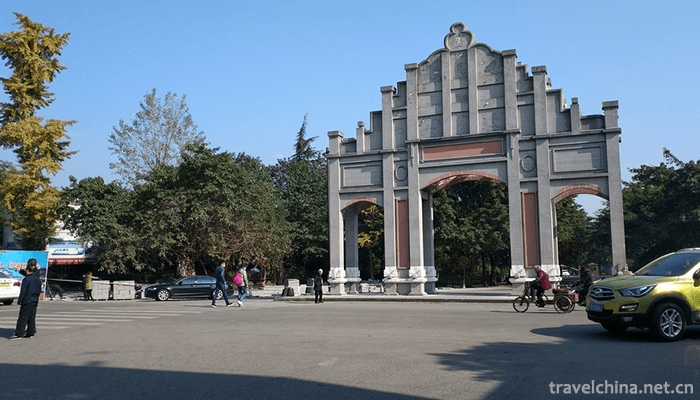
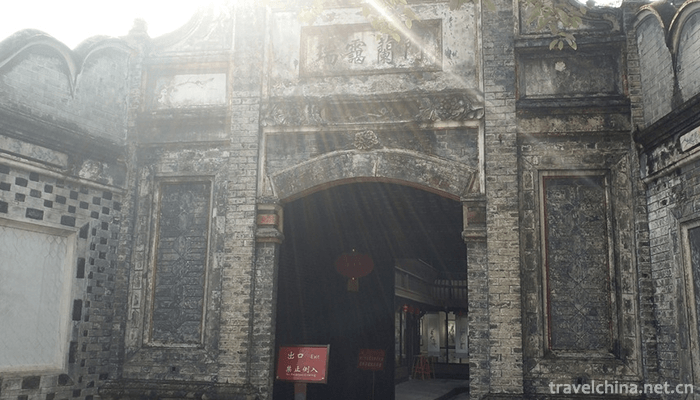
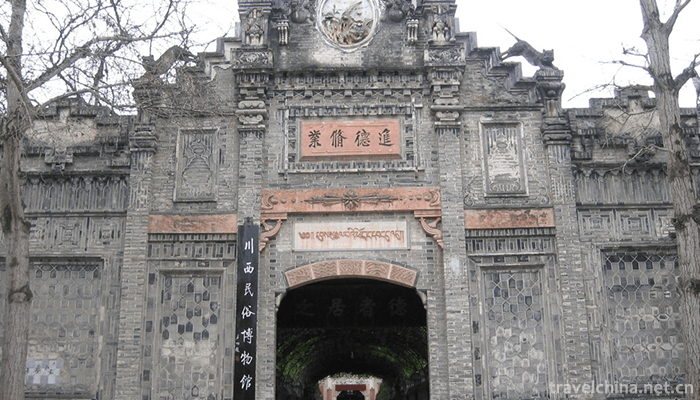
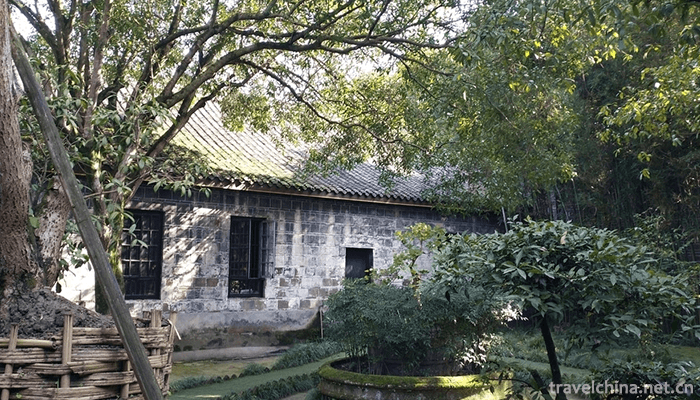
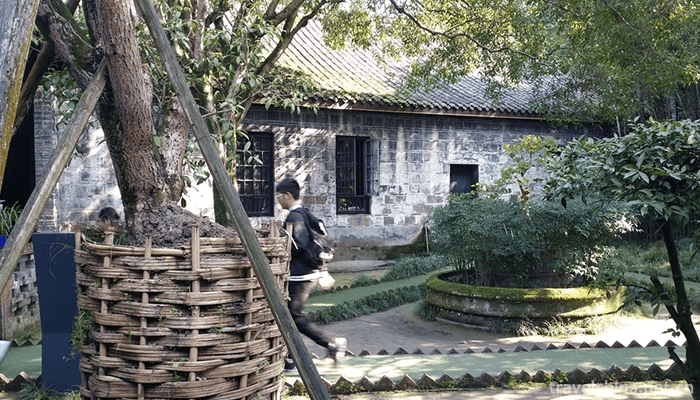
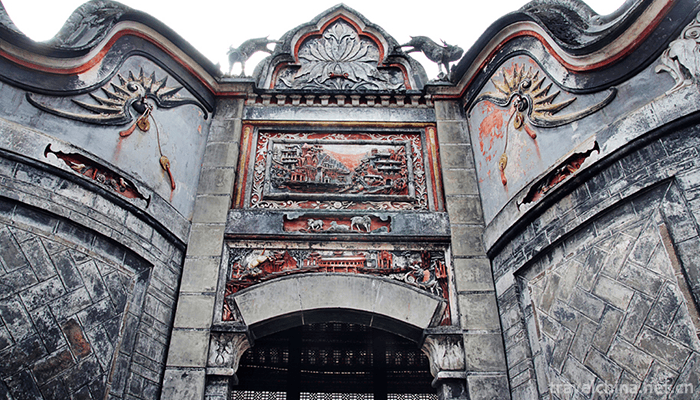
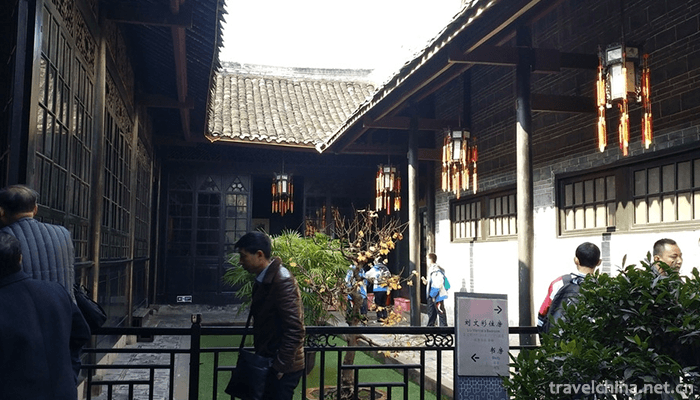

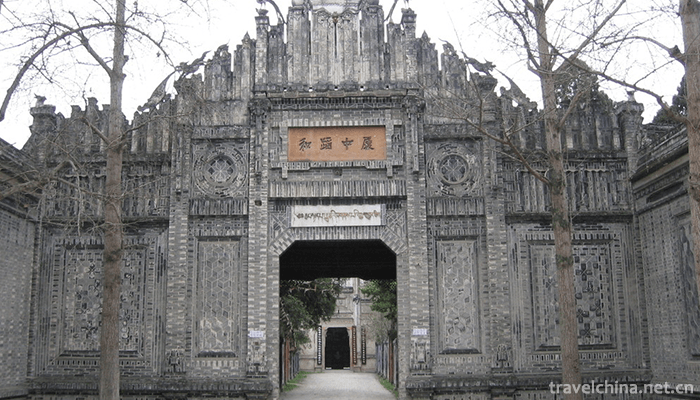
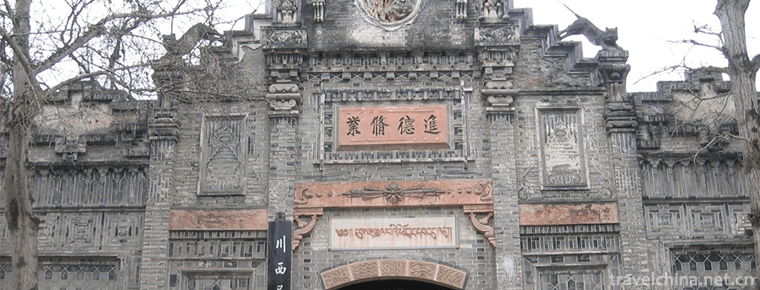
Dayi Liushi Manorial Museum
-
Lijiang Ancient Town
Lijiang Ancient City is located in the ancient city of Lijiang City, Yunnan Province
Views: 245 Time 2018-10-17 -
Guangfu Ancient City Scenic AreaHandan City Hebei Province
Yongnian Guangfu City, also known as Yongnian City , Guangfu Ancient City , Ancient City , Guangfu City , Shuicheng , Taiji City , Shuicheng , is located in the southeast of Hebei Province
Views: 192 Time 2018-11-24 -
Zhenjiang Sanshan Scenic Area
Zhenjiang Sanshan Scenic Area is located in the southwest of Jiangsu Province and on the South Bank of the lower reaches of the Yangtze River
Views: 155 Time 2018-12-06 -
Beihai Seabed World
Beihai Seabed World is a national AAAA-level tourist attraction and national marine science education base. It is a large-scale comprehensive ocean hall which mainly displays marine organisms and inte
Views: 208 Time 2018-12-26 -
Qinghui Garden
Qinghui Garden is an ancient garden building built in Ming Dynasty. Located in Qinghui Road, Daliang Town, Shunde District, Foshan City, Guangdong Province,
Views: 224 Time 2019-02-07 -
Tangya Tusi City Site
Tangya Tusi Town Site is located in Tangya Town, Xianfeng County, Enshi Tujia and Miao Autonomous Prefecture, Hubei Province, with its back to Xuanwu Mountain and facing Tangya River.
Views: 172 Time 2019-02-13 -
Ancient Town of Yi Nationality
The ancient town of Yi people is located in the north of Yongan Avenue, the west of Sun Li Park, the east of Longchuan River and the south of Chuda Expressway in Chuxiong Economic and Technological De
Views: 220 Time 2019-03-04 -
Cai Lifo quan
Cai Li Foquan is one of the Nanquan in Chinese traditional boxing. Legend has it that Chen Heng (1806-1875), a native of Jingmei Township, the new capital of Guangdong Province,
Views: 205 Time 2019-04-04 -
Dan GA harmonics
Jia Hao, which means "grand singing and dancing performance" in Chinese, is a kind of collective dance, usually performed in the Tibetan New Year and major festivals every year. Men
Views: 365 Time 2019-04-25 -
Chengdu Jinsha Site Museum
Chengdu Jinsha Site Museum, a national AAAA tourist attraction, is located at No.2 Jinsha Ruins Road, Qingyang District, Chengdu City, Sichuan Province. It covers an area of 456 Mu and a building area of 38000 square meters.
Views: 225 Time 2020-11-06 -
Luzhou transportation
By the end of 2017, the number of civil motor vehicles in Luzhou had reached 678200, an increase of 74700 over the beginning of the year. Among them, 352400 cars (including 294 tricycles and low-speed trucks), an increase of 56500, and 323700 motorcycles, an increase of 17600
Views: 929 Time 2020-12-14 -
Nanchong scenic spot
The national 5A tourist attraction is located in Ma'an Town, Yilong County, with a total planning area of 52.5 square kilometers. The core scenic area with the former residence of Zhu De, the birthplace of Zhu De and the memorial hall of former residence of Comrade
Views: 334 Time 2020-12-17
